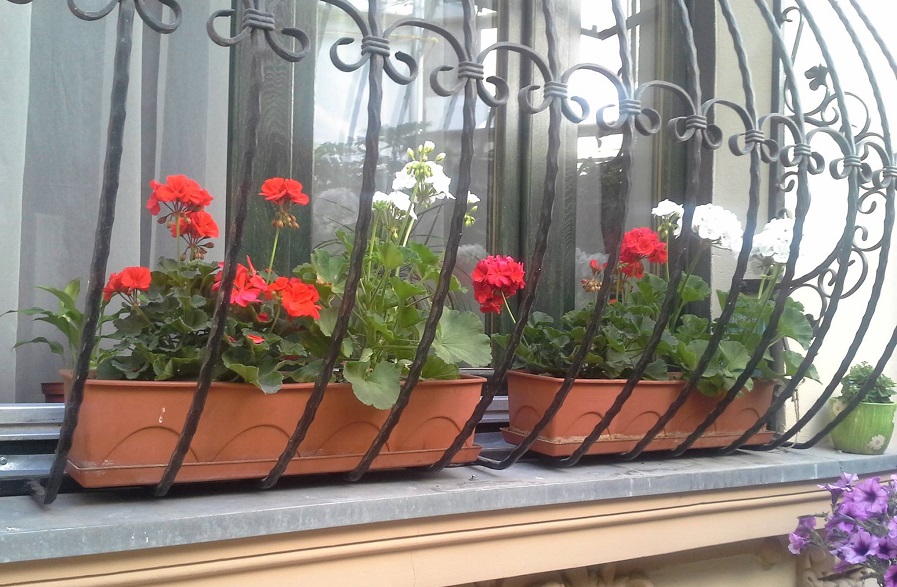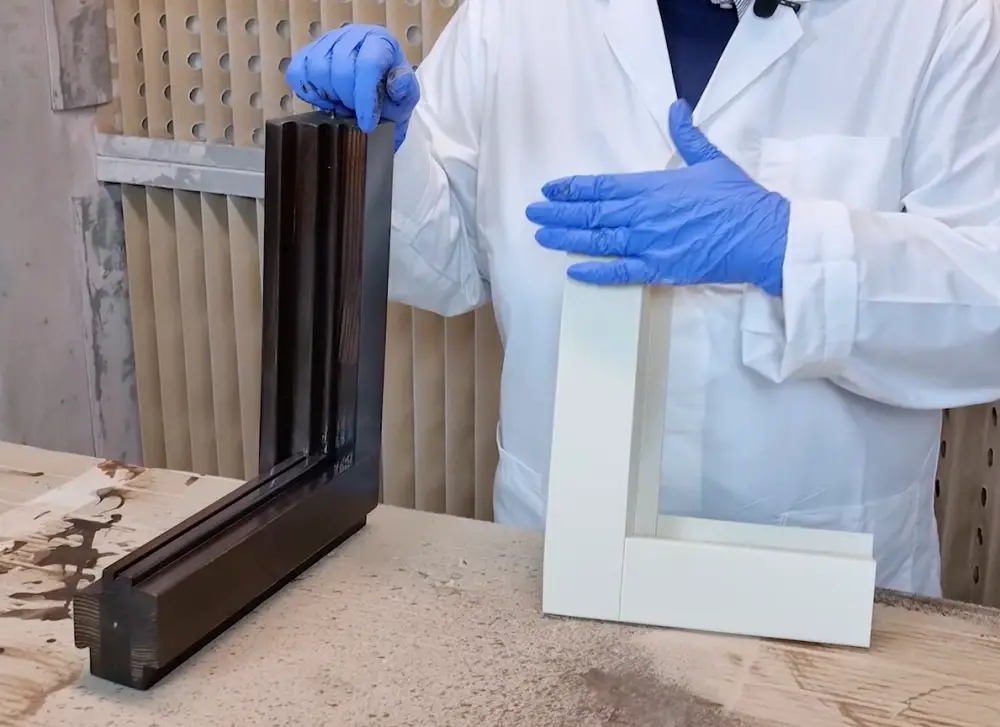We want wood-framed windows, but we're scared that they won't stand the test of time. The idea that they would only need to be repainted after a few years leads us to choose other options. We don't have to give up wood if we like it, just choose windows that are well made. When built and finished correctly and with quality products, wooden windows stand the test of time and we can enjoy the beauty of wood for a long time. My oak windows finished 20 years ago bear witness to this.

The durability of the window depends on the wood and the construction solutions chosen
The strength of the frames is not only determined by the finish, but also by the choice of wood and construction solutions. We are talking about wooden frames, so their strength depends on the strength of the wood. The subsequent behavior of the window and its resistance over time will be affected by its quality, the way it is processed, assembled and protected, and its reaction to external factors.
In the past, window frames were made of solid wood. Warping, dimensional variation, the presence of defects often affected the quality and durability of the window. In the meantime, technologies have evolved and laminated wood is used for quality windows. It is more dimensionally stable, stronger and offers a better thermal insulation.
The removal of all defects in the wood during the manufacturing process leads to a significant increase in strength. The strips from which the laminated wood is formed must be of equal thickness and cut radially or semi-radially. In this way, the stresses in the wood cancel each other out and the elements do not warp. The strips must be of the same wood species. In this way the behavior of the element will be uniform and the strength higher. Different species work differently, adding extra stresses. The strength decreases if the laminated elements have, for example, fir on the inside and oak on the outside or are veneered.
High-density wood is best. The higher the density, the stronger the wood. Windows made of oak, meranti or pin are better than molid, not just aesthetically but also in terms of durability.
Water is the main enemy of wood, and construction solutions must be chosen so that it drains away and does not puddle. The strength of the window is increased if glazing beads are used to protect the lower sash area and the bottom of the window. Also, fitting external glazing that provides water drainage and protection against bouncing raindrops will ensure that the window retains its unchanged appearance for a long time.

What finish to apply to wood to make windows durable
The most commonly used professional window protection materials are now water-based. In the past, alkyd materials were used, but the high flammability hazard and the requirements for emission of volatile organic compounds led manufacturers to focus on waterborne products. These have been continually refined and are now the products with the longest durability.
What should be the characteristics of the materials used to finish the wood frames?
The finish that window frames are covered with is intended to protect the wood against water, moisture in the air and the sun's UV rays. It must allow water to drain away as well as possible, prevent it from penetrating into the wood and repel as much of the sun's rays as possible. To achieve this performance, a few things are very important:
- Water drains better the smoother the surface. This means that sanding both the wood and the primer is very important. On a well-sanded primer the varnish forms a smooth film and the water will drain very well.
- Insect repellent materials are also important for durable windows. Fungi cause mold and wood rot, and insects make holes in the wood, opening the water path to the interior. Use impregnants containing such materials or find another way to treat the wood against fungi and insects before applying varnish/paint.
- The application of semi-transparent finishes is preferred to transparent finishes. Applying a first coat of color and a low-pigment varnish increases the strength of the finish and thus of the window.
- Don't skip the primer. It's what gives the film consistency, makes the coat thicker. The primer is also the one that sands well, so you get smooth surfaces on which water glides easily.
- Totally clear and high gloss varnish lasts the least. Use lightly pigmented matt or semi-matt lacquers for good UV resistance. Wood resists best when coated with paint.
- Do not rush the lake dry with hot air blowers or other uncontrolled means. It will dry much faster on the surface and water will get trapped inside. An opalescent-looking finish will result.
- Use materials recommended for exterior use. They are more resilient and allow the wood to change in size as outside humidity rises and falls, without cracking the film.
- Take your time with fitting. Lacquers fully harden in a month or more. In all that time they can still absorb water. Avoid fitting windows in new houses before the walls are dry. There is a risk of water getting into the varnish and then into the wood.
- Recommend that windows are maintained with care. Cleaning them with abrasive substances should be avoided as they can be scratched and even remove some of the finish coat.
- No matter how good the materials are and how well they are applied, over time they are still removed by external factors. Rain, snow, snow, wind, atmospheric dust will remove several microns from the surface every year. Studies say that around 15 μ of an average total film thickness of 150 μ (primer + varnish) is removed annually. A simple calculation gives 75 μ in 5 years, i.e. the thickness of the varnish. If you go to primer, the resistance of the finish decreases much faster because primer does not have the same resistance to abrasion and external factors as lacquer. This is why most manufacturers give a warranty of max 5 years and recommend maintenance after 3 years (before going to primer). Maintenance materials are easy to apply and do not require specialist intervention.
Next follow the step-by-step application of a professional system for protecting window frames. If you have any questions or clarifications, leave them below in the dedicated space or in a comment on the Wood Magazine YouTube channel. I'll be sure to get back to you.




































Add comment